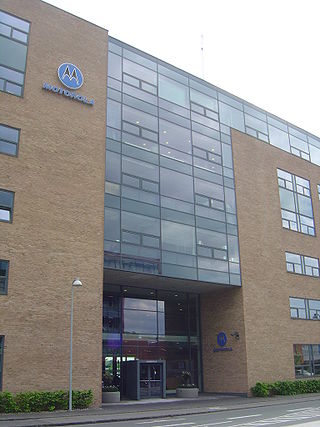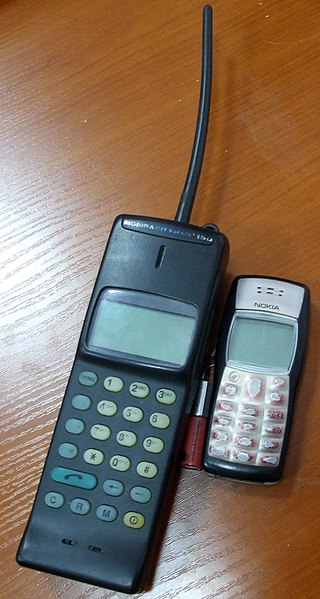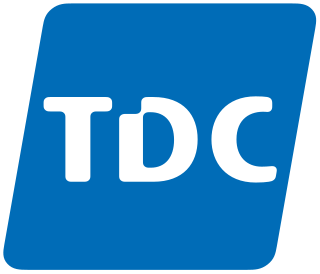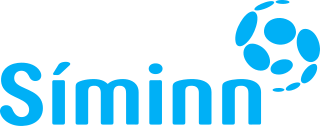
Advanced Mobile Phone System (AMPS) was an analog mobile phone system standard originally developed by Bell Labs and later modified in a cooperative effort between Bell Labs and Motorola. It was officially introduced in the Americas on October 13, 1983, and was deployed in many other countries too, including Israel in 1986, Australia in 1987, Singapore in 1988, and Pakistan in 1990. It was the primary analog mobile phone system in North America through the 1980s and into the 2000s. As of February 18, 2008, carriers in the United States were no longer required to support AMPS and companies such as AT&T and Verizon Communications have discontinued this service permanently. AMPS was discontinued in Australia in September 2000, in Pakistan by October 2004, in Israel by January 2010, and Brazil by 2010.

Motorola, Inc. was an American multinational telecommunications company based in Schaumburg, Illinois. It was founded in 1928 as Galvin Manufacturing Corporation by brothers Paul and Joseph Galvin. The company changed its name to Motorola in 1947. After having lost $4.3 billion from 2007 to 2009, Motorola was split into two independent public companies, Motorola Mobility and Motorola Solutions, on January 4, 2011. The reorganization was structured with Motorola Solutions legally succeeding Motorola, Inc., and Motorola Mobility being spun off.

Telia Company AB is a Swedish multinational telecommunications company and mobile network operator present in Sweden, Finland, Norway, Denmark, Estonia, Latvia and Lithuania.

Total Access Communication System (TACS) and ETACS are variants of Advanced Mobile Phone System (AMPS) which were announced as the choice for the first two UK national cellular systems in February 1983, less than a year after the UK government announced the T&Cs for the two competing mobile phone networks in June 1982. This 1G technology is now obsolete.
Telecommunications in Iceland is a diversified market.

NMT is an automatic cellular phone system specified by Nordic telecommunications administrations (PTTs) and opened for service on 1 October 1981. NMT is based on analogue technology and two variants exist: NMT-450 and NMT-900. The numbers indicate the frequency bands used. NMT-900 was introduced in 1986 and carries more channels than the older NMT-450 network.

A car phone is a mobile radio telephone specifically designed for and fitted into an automobile. This service originated with the Bell System and was first used in St. Louis, Missouri, United States on June 17, 1946.
The signalling system used on the rail transport in Norway is regulated by the Regulations of December 4, 2001 no. 1336 about signals and signs on the state's railway network and connected private tracks.
1G refers to the first generation of cellular network (wireless) technology. These are mobile telecommunications standards that were introduced in the 1980s and were superseded by 2G. The main difference between these two mobile cellular generations is that the audio transmissions of 1G networks were analog, while 2G networks were entirely digital.

Mobile radio telephone systems were mobile telephony systems that preceded modern cellular network technology. Since they were the predecessors of the first generation of cellular telephones, these systems are sometimes retroactively referred to as pre-cellular systems. Technologies used in pre-cellular systems included the Push to Talk, Mobile Telephone Service (MTS), Improved Mobile Telephone Service (IMTS), and Advanced Mobile Telephone System (AMTS) systems. These early mobile telephone systems can be distinguished from earlier closed radiotelephone systems in that they were available as a commercial service that was part of the public switched telephone network, with their own telephone numbers, rather than part of a closed network such as a police radio or taxi dispatching system.

The history of mobile phones covers mobile communication devices that connect wirelessly to the public switched telephone network.

TDC Holding A/S or TDC Group is a Danish telecommunications company dating back to 1879. TDC Group is the largest telecommunications company in Denmark. The company's headquarters are located in Copenhagen.

Motorola Solutions, Inc. is an American video equipment, telecommunications equipment, software, systems and services provider that succeeded Motorola, Inc., following the spinoff of the mobile phone division into Motorola Mobility in 2011. The company is headquartered in Chicago, Illinois.

Síminn hf., previously named Landssíminn and Póstur og Sími, is an Icelandic telecommunications company. It offers communication services for both private and corporate clients, including mobile (2G/3G/4G/5G), landline (VoIP/POTS), Internet (ADSL/VDSL/FTTH) and IPTV services. Síminn also operates multiple TV channels and streaming services. Síminn is listed on the Icelandic stock exchange.
The Excel/Excell marketed a range of mobile phones developed by the British company Technophone in the 1980s. These mobile phones were advertised as the smallest, lightest most intelligent mobile phones in the world at that time, and were the first to fit in a pocket. While larger than later mobile telephones at 7 inches tall, 3 inches wide and 1 inch deep, they were still more compact than other mobile cell phones of their time, which included models by Motorola and Stornophone, as well as dedicated car phones.

The Motorola MicroTAC is a cellular phone first manufactured as an analog version in 1989. GSM-compatible and TDMA/Dual-Mode versions were introduced in 1994. The MicroTAC introduced a new "flip" design, where the "mouthpiece" folded over the keypad, although on later production the "mouthpiece" was actually located in the base of the phone, along with the ringer. This set the standard and became the model for modern flip phones today. Its predecessor was the much larger Motorola DynaTAC and it was succeeded by the Motorola StarTAC in 1996. "TAC" was an abbreviation of "Total Area Coverage" in all three models.

YouSee is the largest quadruple play service provider in Denmark, and is a part of Nuuday which is a spun-off company from TDC Group, the largest telecommunications company in Denmark which was split into two separate companies. YouSee currently has 994,000 customers, down from its peak of 1.4 million in 2015.
Thomas Haug was a Norwegian-Swedish electrical engineer known for developing the cellular telephone networks.

Ericsson Mobile Communications AB was a subsidiary of Ericsson, entirely focused on development of mobile phones (handsets), which has been fully acquired by Sony Corp. in 2011. This concluded tumultuous and unhappy venture between the two electronic giants The major offices were located in Lund, Kumla, Raleigh, North Carolina and Lynchburg, Virginia.

Ericsson Radio Systems AB was the name of a wholly owned subsidiary in the Ericsson sphere, founded on 1 January 1983 by buying out all former owners of Svenska Radioaktiebolaget (SRA). The company was well known in Scandinavia and elsewhere in the 1980s, as it was deploying NMT systems and developing a line of mobile telephones under the brand name Hotline. In 2002 the subsidiary changed its name to simply Ericsson AB and absorbed 19 other legal entities in the Ericsson sphere, but kept its company registration number with the Swedish state, so it is still the same legal entity as Ericsson Radio Systems. The merge of the smaller legal entities was done to cut down operating costs. The main activity within Ericsson AB is infrastructure for mobile telephony.














